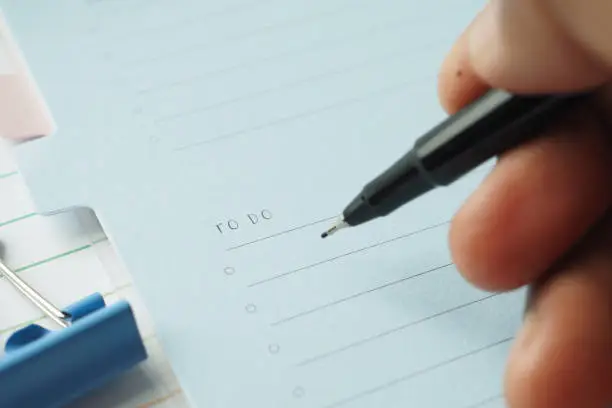Letter writing holds an entirely different status in forming professional relations in this world of e-mails, text messages, and instant messaging. Whether they be potential customers, partners, or associates, a well-written letter implies the amount of trust, professionalism, and long-term relations a company requires. Letters are not just a form of communication; they are a way to leave an effect.
One can’t overestimate the importance of a structured, clear, and well-written letter, especially when someone wants to build rapport and stay in professional contact. In any case, someone does not feel confident with regard to format or structure; using the employment letter template would be a good starting point. Following are the 10 essential tips that will help in writing effective letters which strengthen professional ties.
1. Understand the Purpose of Your Letter
Before you even begin to write, it is critical to determine what your purpose for writing is. Are you trying to establish a new relationship, maintain one you may already have, or help resolve an issue? The clarity of purpose will provide the direction needed for your tone, content, and structure. You can imagine the difference this will make in a letter of introduction compared with a thank-you letter or follow-up after a business meeting.
It gives the intent clearly, therefore you communicate more concisely and meaningfully; the person reading it knows exactly why you are writing and what you want to achieve.
2. Address Recipient Personally
Making your letter effective, first of all, involves using the addressee’s name. Avoid greetings like “Dear Sir or Madam”; instead, put in an effort to conduct research on the name, title, and any information connected with one’s role. It is a sign of respect, but at the same time, this gesture will render the connection more straightforward and much friendlier.
For example, there is a vast difference between the opening “Dear Mr. Smith,” and the general, “To whom it may concern.”
3. The Tone Should Be Professional yet Warm
When it comes to written communications, finding just the right balance between professionalism and warmth pays dividends in relationships. While your tone should always be professional-particularly in business-your aim should be to add character to your letter. People like reality, and a letter that sounds real is infinitely more effective than one that sounds mechanical or impersonal.
Phrases like “I hope this letter finds you well” or “Thank you for your time and consideration” will help in giving a warm touch to the letter without making the tone too unprofessional.
4. Be Clear and Concise
Time is the most valuable entity in a workplace. Your letter should be straight, and also lack unnecessary flow on unrequired lines. The outline should start with an introduction, followed by a straight body of content, and end with a conclusion without giving room for redundancy.
For instance, if you are writing to request a meeting, say so: “I am writing to request a meeting with you in which I can discuss the following: _________.” This makes sure that the reader knows your purpose right off, and any action that needs to be taken.
5. Personalize the Content
Sometimes, an open or generic letter tends to be passed over or ignored, especially in professional circles where personal contact counts. Make the letter personal, relating your connection or discussion you have had with them. Mention specific projects you shared, general experiences, or other subjects talked about earlier to make your letter feel more relevant and interesting.
For example, “It was great discussing our common vision about project X during our meeting last week” shows your appreciation of the interaction and attention to details, which helps cement relationships.
6. Show Interest in the Addressee
Building professional relationships is a two-way street. Be genuinely interested in either the recipient’s work, goals, or organization. A letter that is completely about one’s needs or achievements may appear self-centered. Instead, balance the content by acknowledging the recipient’s work or their contributions to your business relationship.
For example, you might say to the client, “Your insights during our last discussion were invaluable in shaping our current strategy.” It shows that you value them and are committed to the partnership.
7. Heed the Structure and Formatting
The structure and presentation of your letter are just as important as its content. A well-organized letter is easier to read and leaves a better impression. Divide your letter into sharply marked sections: an introduction, the body, and the conclusion. Take advantage of paragraphs to separate your different points, and, if needed, use bullet points or lists.
Also, when formatting, use a clean, professional font with good spacing between lines and paragraphs. A cluttered or messy letter can make you appear to be unprofessional, even though the content is good.
8. Call to Action
Every business letter should include a clear call to action in its close. If you want your recipient to respond, set up a meeting, or review a proposal, say so. A murky close such as “Looking forward to hearing from you” fails to direct the reader toward an next action.
Instead, use something simple like: “I look forward to discussing this further in our upcoming meeting on [date]”, or “Please do not hesitate to get in touch with any questions or if further information is needed”.
9. Proof and Edit for Clarity
One of the fastest ways to blow your professionalism is with typos, grammatical errors, or some awkward phrasing. Always proofread your letter before you send it out. Sometimes reading it aloud really helps you catch those errors or places where a message could be unclear. It is also very good to have a colleague or friend review it for a second point of view.
Poorly written letters may be seen to represent carelessness, even when it is not intended, and can be the cause of many more problems when professional relationships are concerned. It takes little more time to make your letter shine; in fact, paying attention to detail and respect for the time of the receiver is reflected in that extra bit of time taken.
10. Follow Up When Appropriate
Sometimes, a letter is simply the beginning of a correspondence. If no response has been received after an adequate amount of time has passed, it’s not at all inappropriate to write a polite follow-up. A follow-up letter or email will remind the recipient that you are still waiting for their response or action.
For example, it could be “I am writing to follow up on my letter of ¹date ² concerning ¹subject ², and I would appreciate the opportunity to hear from you at your earliest convenience.” It shows that you are a go-getter and maintain organization-a two-in-one quality that helps in nourishment of professional ties.







